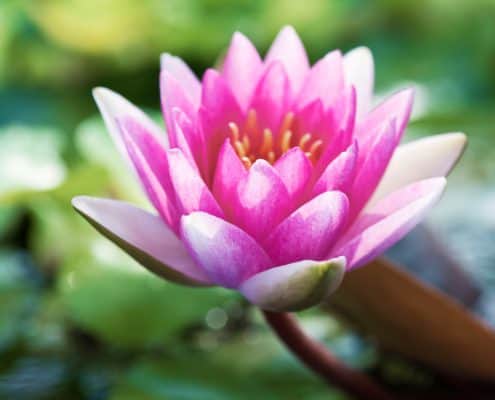
Benefits of Water Plants
No matter the size of your pond or water feature, aquatic plants will spruce it right up! Not only will they make it look great, but they have amazing benefits for your pond’s ecosystem. They are essential in preventing algae blooms, providing habitats, acting as a food source and filtering the water.
There are four types of aquatic plants: Submerged, Floating, Emergent and Shoreline.
Floating Plants
These are plants that float on top of the water or just below it. They have roots that either float or are in the soil at the bottom of the pond. Floating plants are best for reducing algae and improving water quality in your pond. They grow very quickly, and because of this, they outcompete algae by using up nutrients and preventing light from entering the pond. Their roots are also a key habitat for fish eggs, and they also help to protect newborn fish. Some awesome examples of floaters are Water Hyacinths, Water Lettuce, Duckweed and Fairy Moss (Azolla).
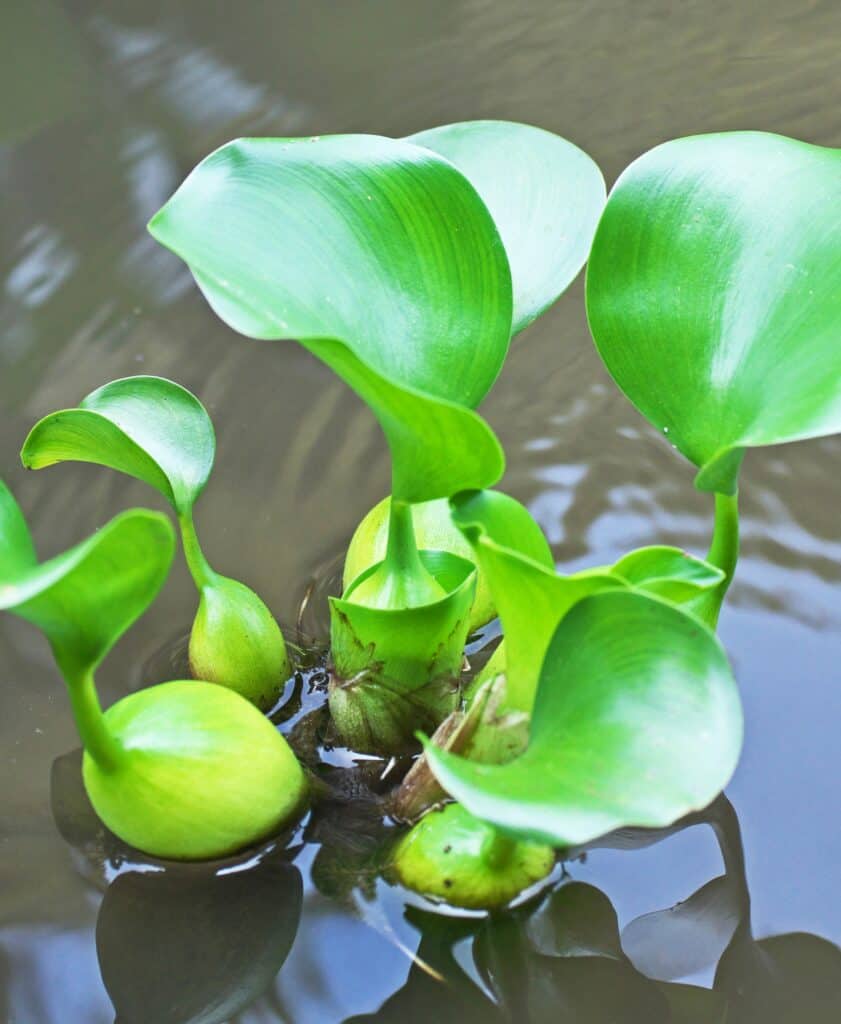
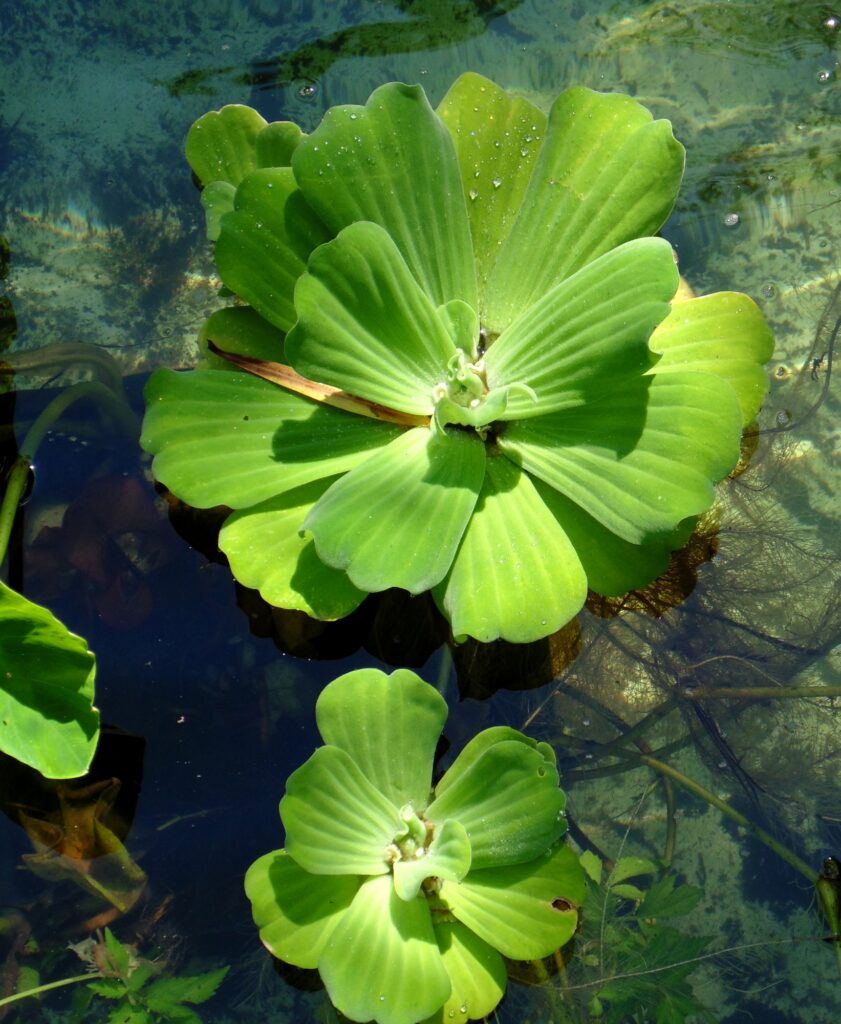
Submerged Plants
Submerged plants are just what they sound like – plants that live and thrive in water. They are also known as oxygenating plants because they filter pond water and keep it clear and algae free. In addition, they filter out pollutants in the water to keep it safe for all the different species that live in ponds. Their leaves provide shelter for fish and release oxygen into the water. Animals also use submerged plants as a source of food and their waste is reabsorbed by the plants to outcompete algae blooms. Some must have oxygenating plants are: Hornwort, Water Thyme (Elodea), Camboda, Eelgrass, Pondweed, Egeria and Parrot Feather.
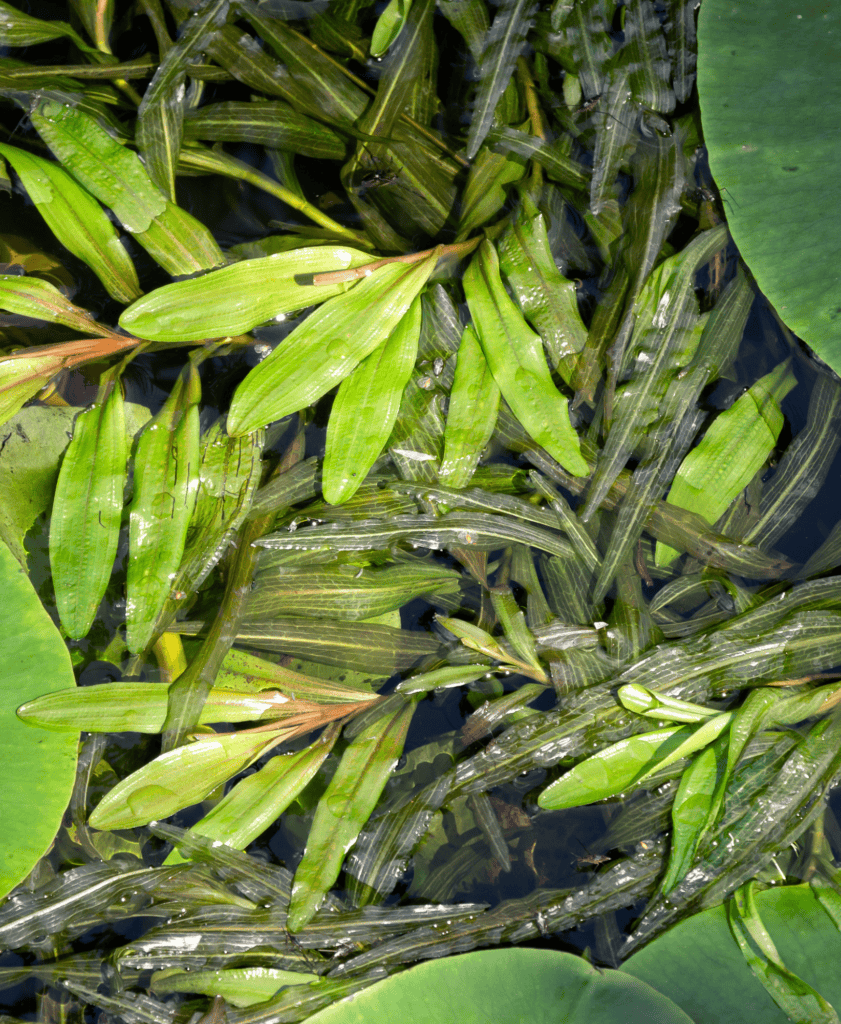
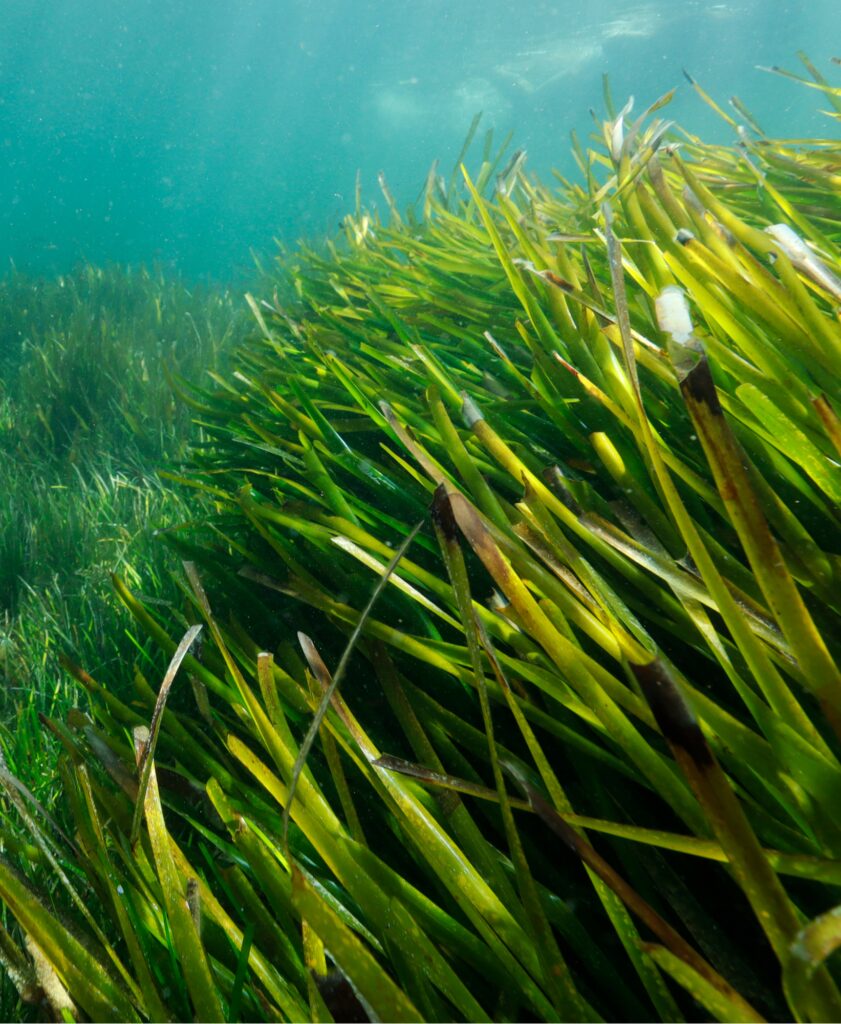
Emergent Plants
Emergent plants have roots in the soil at the bottom of the pond, but their leaves and stems are visible above the water’s surface. They are usually found closer to the edge or shore of the pond. They can help improve the look of your pond, as quite a few of them have spectacular flowers. They are extremely important to pond ecosystems as they provide habitats and are a source of food for animals like fish, birds and insects. They also help to filter soil and absorb important nutrients. If you want flowering emergent plants, try Water Lilies, Canna Lilies, Pickerel Rush, Cattails, Bulrushes or Arrowheads.
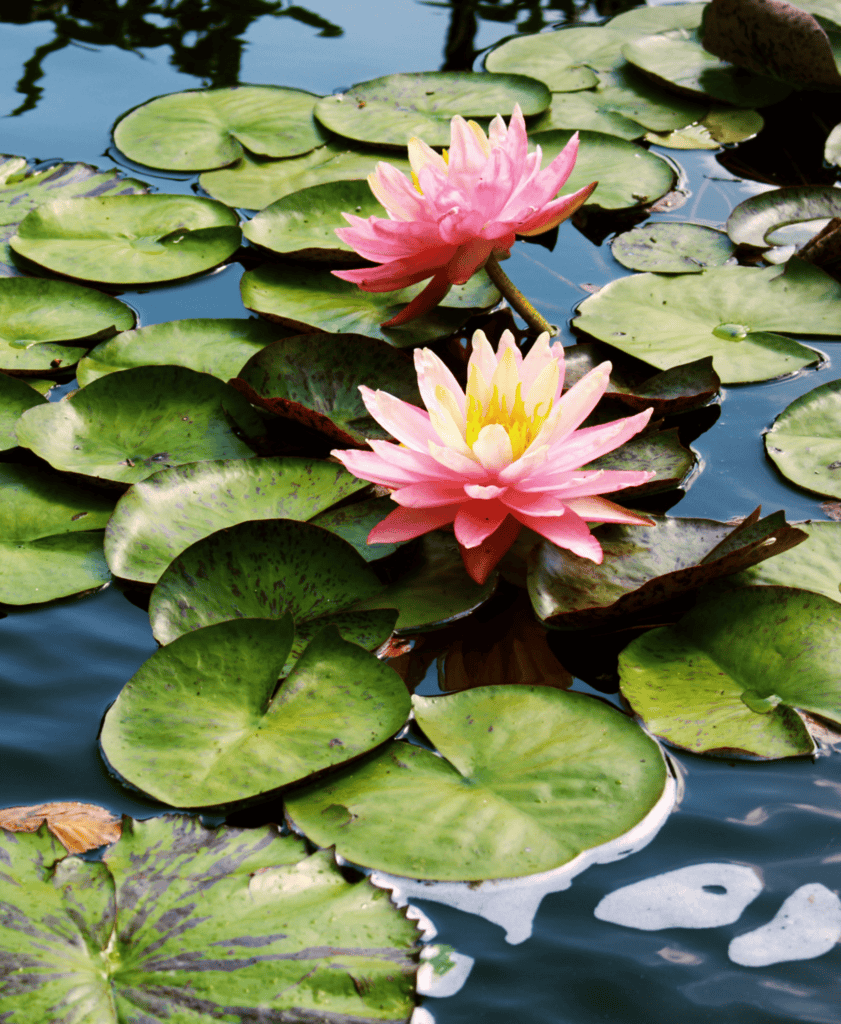
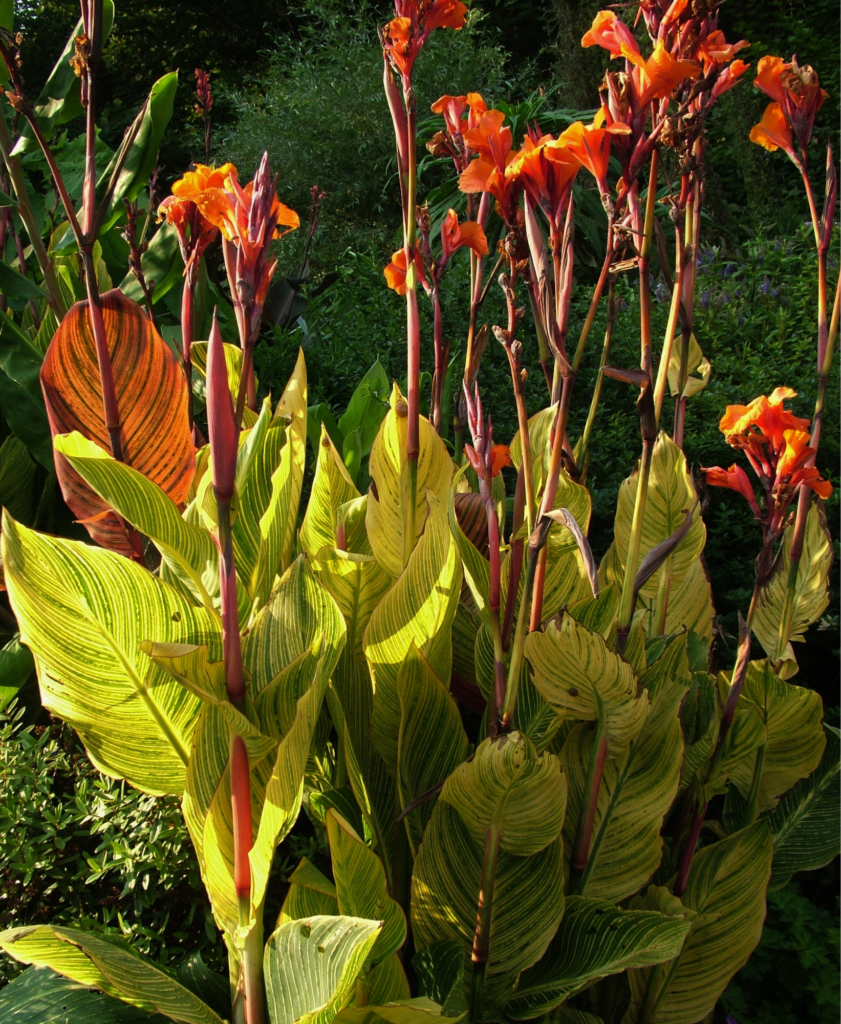
Shoreline Plants
Shoreline plants prefer that their roots not in the water, but they can handle being very moist or flooded. They are common around bigger ponds and lakes but can also be planted around small ponds as well. They protect and surround the water and help stop erosion and harmful runoff. They are another great habitat for animals and provide great areas for spawning. Some awesome native shoreline plants are listed below:
Trees:
- Balsam Fir
- Red, Silver and Sugar Maples
- White Birch
- Larch
- Hemlock
- White Spruce
- White and Red Pine
- White Cedar
Shrubs:
- Serviceberry
- Black Elderberry
- Sumac
- Ninebark
- Juniper
- Winterberry
- Witchhazel
- Dogwood (Red-Twig and Alternate-Leaf)
- Canada Yew
Vines:
- Virginia Creeper
- Riverbank Grape
- Virgin’s Bower
Perennials:
- Beebalm
- Beardtongue
- Foamflower
- Cardinal Flower
- Joe Pye Weed
- Wood Fern
- Coreopsis
- Tickweed
- Milkweed
- Wild Columbine
- Anemone
- Hyssop
It is very important when choosing water plants and shoreline plants that you avoid invasive species. These can be detrimental to ecosystems as they outcompete native plants and are usually very fast-growing, and quickly take over ponds and surrounding areas.
Preventing Algae Blooms using Water Plants
Algae is the product of an imbalanced ecosystem in your pond. Algae develop from feeding on excess nutrients in the water and sunlight. The first step is to have a developed shoreline area to stop runoff into your pond. This drastically reduces phosphorous in your pond, which is essential for algae growth. To reduce sunlight, plant fast-growing floaters in your pond to provide shade. Make sure you have lots of submerged plants to provide oxygen for your pond and to absorb the excess nutrients that the algae need to grow. If there are fish in your pond, do not overfeed them because those nutrients can promote algal growth.
Having a pond in your backyard is a great way to give back to the environment. You are creating an ecosystem, and by keeping your pond healthy, you create habitats and an area where all sorts of species can thrive and grow!

